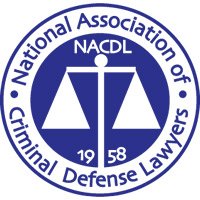Violent Crimes
A criminal accusation involving any type of violence will typically be the subject of aggressive prosecution, and any penalties involved are likely to be harsh. Violent crimes under state law are mostly found in Texas Penal Code, Title 5, “Offenses Against the Person.
Crimes of violence may include assault, kidnapping, threats and other offenses. Many of these offenses contain similar elements. For instance, the differences between assault and aggravated assault or unlawful restraint and kidnapping can be slight. The difference in penalties between these offenses, however, can be significant.
Attorney for Violent Crimes in San Antonio, TX
The accusation of a violent crime could change your life. It is important to fight to protect your freedom. A San Antonio violent crime attorney can assess your charges and develop a defense plan for your case.
At Goldstein & Orr, our experienced attorneys will carefully evaluate all evidence. We will find any way to challenge the charges and seek to have them reduced or dismissed. Our San Antonio criminal defense firm has represented clients on serious criminal matters for more than four decades, including allegations involving violence.
Call us today at (210) 226-1463 for a free telephone consultation.
Examples of Violent Crimes Prosecuted in San Antonio, TX
The most common examples of violent crimes prosecuted in San Antonio and Bexar County, TX, include:
- kidnapping;
- crimes causing injury to a child, elderly or disabled person;
- terroristic threats;
- harassment;
- stalking;
- manslaughter; and
- homicide.
Information Center
- How is assault defined under the Texas Penal Code?
- What makes assault “aggravated?”
- What are other assaultive offenses?
- What is the difference between kidnapping and unlawful restraint?
How is assault defined under the Texas Penal Code?
Simple assault, as defined in Texas Penal Code sec. 22.01, means to intentionally and knowingly:
- Cause bodily injury to another
- Threaten another with imminent bodily injury
- Causes physical contact with another when the accused knows or should reasonably believe the victim will find the contact offensive
An assault under section (a) is a Class A misdemeanor, and an assault under section (b) or (c) is a Class C misdemeanor. However, the law provides for the offense to increase in severity if certain circumstances are met. Under section 22.01(b), any of the following can cause an assault to be a third degree felony:
- If the victim is a public servant lawfully discharging an official duty, or if the assault is in retaliation for a public servant performing a duty
- If the assault is a second offense for domestic violence
- If the assault involving impeding the breath of a family or household member
- If the victim was a government contractor and the assault occurred in the course of his or her duties, or the assault was in retaliation of a government contractor performing his or her duties
- If the victim is a security guard performing his or her duties
- If the victim is emergency services personnel performing his or her duties
Some violent offenses, including aggravated robbery, robbery, burglary and theft, could be charged as organized criminal activity if a group works together to commit the criminal offense. In these cases, the charges could carry more severe penalties.
What makes assault “aggravated?”
Aggravated assault is a more serious assault charge found in Texas Penal Code section 22.02. An assault can be elevated to an aggravated assault if it is alleged to have caused serious bodily injury, or if the use or exhibition of a deadly weapon is alleged in the commission of the assault.
Aggravated assault is a second-degree felony. However, the charges may be elevated to a felony of the first degree if the aggravated assault:
- Used a deadly weapon and caused serious bodily injury to a family or household member
- Was committed by a public servant
- Was committed against a public servant or security officer lawfully discharging his or her duties, or in retaliation for discharging his or her duties
- Was against a witness, prospective witness, informant or person who reported a crime; or
- When the accused was in a vehicle and fired a gun:
- Knowingly or recklessly in the direction of a building or other vehicle; or
- And causes serious bodily injury to another.
What are other assaultive offenses?
Other assaultive offenses in Chapter 22 include:
- Injury to a Child, Elderly Individual or Disabled Individual (Texas Penal Code sec. 22.04)
- Abandoning or Endangering a Child (Texas Penal Code sec. 22.041)
- Deadly Conduct (Texas Penal Code sec. 22.05)
- Terrorist Threat (Texas Penal Code sec. 22.07)
What is the difference between kidnapping and unlawful restraint?
Texas Penal Code, Chapter 20 contains the offenses of kidnapping and unlawful restraint.
Unlawful restraint (Texas Penal Code sec. 20.02) means to intentionally and knowingly restrain another person. “Restrain” means to move a person or confine a person’s movements without consent. The lack of consent can be due to force, intimidation or deception. A child younger than 14 cannot consent, and a child between 14 and 17 cannot consent to being moved outside the state or outside 120 miles of his or her home.
The crime is charged as a Class A misdemeanor, unless the victim was younger than 17, in which case it becomes a state jail felony. If the victim is a public servant discharging his or her duties or the accused is in custody, the charge becomes a third-degree felony.
Kidnapping (Texas Penal Code sec. 20.03) is a more serious offense. It involves the same elements as unlawful restraint, but the victim is “abducted,” meaning he or she is held in a secret place where he or she cannot be found, or deadly force or the threat of deadly force is used. Kidnapping is a third-degree felony.
Kidnapping may become aggravated kidnapping, a first-degree felony, if:
- The victim is held for ransom
- The victim is used as a shield or hostage
- The kidnapping is to facilitate another felony or the flight after a felony is committed or attempted
- The victim suffers bodily injury
- The victim is sexually abused
- The kidnapping is to terrorize the victim or another person
- The kidnapping is intended to interfere with a governmental or political function
Additional Resources for Violent Crimes
Bexar County Victim Services Division – This link includes a list of local services in Bexar County that can help victims of violent crime and other crimes.
Texas Penal Code – Many violent crimes in Texas are defined in Chapter 22 of the Texas Penal Code, including assault and rape. This Chapter, also known as Assaultive Offenses, defines the elements to each offense and the penalties an individual could potentially receive if convicted of the offense.
National Center for Victims of Crime – This national non-profit organization provides assistance to individuals who are victims of violent crimes, in addition to individuals, families and communities that have been harmed by crimes of violence.
Finding a Lawyer for Violent Crimes in Bexar County, TX
If you are facing accusations of any type of violent offense in San Antonio, contact a skilled San Antonio violent crime defense lawyer at Goldstein & Orr. We have vast experience representing clients charged with serious offenses that can result in decades in jail, like assault or kidnapping.
Call us today at (210) 226-1463.











